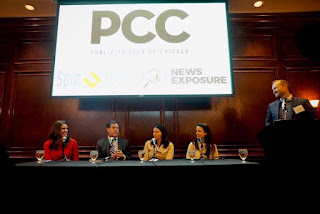April 2, 2020
Recently, the LCWA healthcare team participated in a luncheon hosted by the Publicity Club of Chicago entitled, “Rx for Healthcare Media,” where some of Chicago’s leading healthcare journalists discussed how to stand out in Chicago’s competitive healthcare market and gave PR pros insights into working with journalists during the COVID-19 pandemic. The panel included Scott Becker, publisher of Becker’s Healthcare; Katharin Czink, Medical Watch producer at WGN-TV; Lauren Petty, health reporter at NBC; and Kristen Schorsch, reporter at WBEZ.
 |
| Photo courtesy of photographer Will Byington |
To kick off the program, each panelist introduced themselves and offered some pitching tips for healthcare stories, including:
- Think real people with human interest angles and patient-focused features (with the exception of Becker’s Healthcare, whose core focus is providers).
- Personalize pitches and talk to reporters like people. A personal approach is the most effective way to go about placing stories.
- Keep all mediums – such as digital and audio – in mind when pitching an NPR affiliate. Think characters and scenes to take people to places.
- Make sure your pitch is understandable for the audience. Simplify press releases into layman’s terms and avoid using jargon or acronyms with no explanations.
- Above all, journalists are looking for experts they trust to provide perspective.
The Impact of COVID-19 on Pitches
The media landscape has shifted significantly since the COVID-19 outbreak, and the news cycle is now coronavirus 24/7. With the new normal of a singular focused news cycle, the pandemic is challenging the way we engage in media relations – especially for a number of our clients who are medical associations. During this time, it’s important to be careful in how you tell your story – and evaluate whether this is the right time to be telling it at all.
While NBC and WGN are solely focused on COVID-19, with 4-5 reporters tied to the virus at once, both Petty and Czink stressed that other pitches are still welcome, but to keep in mind these stories will be pushed to a later date, depending on when the pandemic passes the news cycle.
Yet, with all the negative news coverage daily, there are still positive stories to tell. From the healthcare workers on the frontlines to the local distilleries making hand sanitizers to colleges using 3D printing to create face shields. These are the encouraging, hopeful stories that people need to hear at this time.
The partnership between the healthcare industry and journalism has never been more important, and we will continue to work with our clients to arm the public with the information they may need to navigate the uncharted waters of this pandemic.
